Log siding homes are terrific places to live because they provide the full log look without the full log price and drawbacks. They possess some of the beauties of nature and provide a warm and comforting atmosphere.
Rising prices are not limited to food and gasoline; they include utility bills for heating and cooling our homes. The following ideas will explain what an energy-efficient log home is and what you can do to increase its efficiency.
Energy-Efficient Homes Are Desirable
Energy-efficient homes provide all the comfort and utility homeowners want while consuming the least amount of energy possible. Home components should include:
- High-quality log siding, corner system, and trims
- Effective insulation in all the right places
- Energy-efficient doors, windows, and lighting
- Adequate weatherstripping and caulking
- Efficient heating and cooling system
An investment in all these home or cabin components is well worth the money. It will reduce heating and cooling bills that help defer their purchasing and installation costs. Log home construction costs are comparable to conventional homes and much less expensive than full log homes.
You will appreciate an efficient log home during the extremes of summer heat and winter cold. Discuss energy-efficiency with your home builder to gain more insight into having a comfortable home year-round.
Log Home Energy Efficiency: Wall Insulation
 Log siding acts as insulation in exterior home and garage walls. It is thick enough at the center, especially with Premier-D to raise a home’s R-value. Exterior walls are insulated with:
Log siding acts as insulation in exterior home and garage walls. It is thick enough at the center, especially with Premier-D to raise a home’s R-value. Exterior walls are insulated with:
- OSB board that is nailed to wall framing
- A thin layer of insulation is installed on OSB board
- House wrap is placed over both of the above
- Log siding, corner logs, and log trims are installed over the above
The interior of a log siding home is insulated with the material of your choice placed between the wall framing. The door and window trims are then secured to the wall framing followed by the siding. Caulk is applied wherever it is needed to seal joints from air leaks. The home can be insulated even more by constructing the walls with 2x6s instead of 2x4s which holds more insulation.
“If you plan to build a log siding home, there are some things you need to know about making them more energy-efficient.”
Log Home Energy Efficiency: Ceiling and Floor Insulation
 Now that you have planned for adequate wall insulation for your climate, you must consider the attic and under the ground floor. All six parts of a room that has an outside wall must be insulated to achieve maximum efficiency. Insulating only the four walls is not enough because:
Now that you have planned for adequate wall insulation for your climate, you must consider the attic and under the ground floor. All six parts of a room that has an outside wall must be insulated to achieve maximum efficiency. Insulating only the four walls is not enough because:
- Heat escapes through the ceilings
- Cold air stays under the ground floors
- Insulation protects from damp basement air
- Insulation dampens outside noises
What about insulating between floors of a two-story, also called double-story, log home? It will cost more but you get the benefits of noise deadening between floors and warmer downstairs rooms in cold weather. The upstairs will be cooler in the summer with insulation under its floor.
Rafters, Doors, Windows, Appliances, and Lighting
There’s more to creating an efficient log siding home than insulating walls, ceilings, and floors.
Go the second mile here and enjoy more energy efficiency with these steps:
- Insulate the ceilings of attics in your home because they can get hotter than 130 degrees Fahrenheit in the summer months depending on your climate
- Purchase energy-efficient doors that also can turn away UV rays
- Purchase insulated windows that can turn away UV rays
- Use window and door wrap before installing them
- Use energy-efficient home appliances
- Install lighting that is also energy-efficient
- Add insulation to ductwork
One of the above steps will make a difference in lowering your utility bills. Practicing all of them will make a significant difference in less energy consumption. Be sure to talk to an energy expert as well as your building contractor to gain more energy-efficient ideas.
Weather Stripping, Caulking, and HVAC
 Wait, there’s still more you can do to make your log siding home more energy-efficient. You will appreciate doing these three things as you realize less money goes “up in smoke.”
Wait, there’s still more you can do to make your log siding home more energy-efficient. You will appreciate doing these three things as you realize less money goes “up in smoke.”
- Weather Stripping stops rain and external moisture from entering the house around window and door openings. It also retains interior air for comfort and reduces heating and cooling bills.
- Caulking seals air leaks in cracks, joints, and gaps between stationary buildings and materials. Weatherstripping is used for moving components like doors and windows.
- Heating and Cooling Systems must be selected that are right for your home and climate. The right type, size, and fuel should be used for economy and efficiency. The equipment and systems must be installed correctly, preferably by HVAC experts to prevent issues.
You can make your log siding home as energy-efficient as any other type of home with the correct structure, insulation, and the steps above.


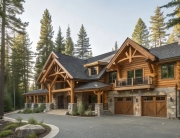
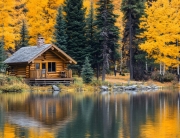
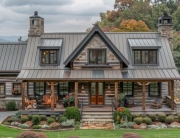
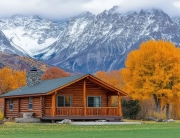
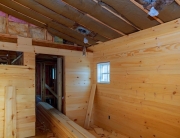
Recent Comments